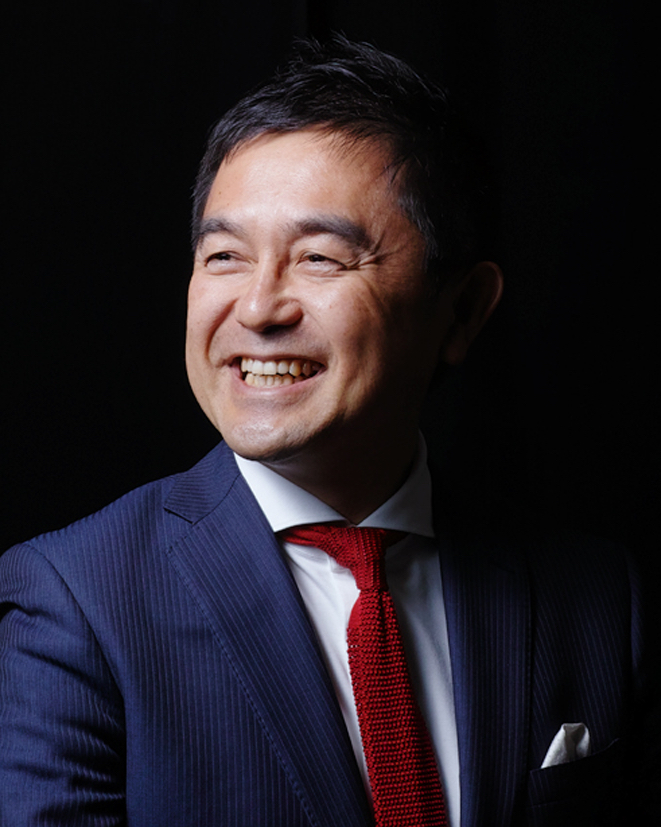Ohkawa Tetsuo is the 6th member of his family to hold the title of president of Ohkawa Printing Company. This Yokohama-based company has been printing the Yokohama Seasider for about ten years, and also works with many other Yokohama businesses. Mr. Ohkawa recently spoke with our founder, Ry Beville, about the importance and future of print media.
Both were aware of the irony (and unfortunate nature) of this interview appearing in the first fully digital edition of the Seasider, due to the Coronavirus. At the same time, it seemed more important than ever to discuss these issues.
Why do you think paper and printed matter is important?
The first is that you can hand it to someone. For example, when you want to explain something on the spot, you can say, “Look here”, and just give it to them–that’s one important point. Another is when there’s a release of new products–some data has emerged showing that printed promotional material (catalogs, flyers, etc) produce better sales than websites. Businesses that understand this aren’t going to abandon paper. In addition to their website, they’ll have printed matter, and that’ll include beautiful pictures they want people to gaze at. They’ll distribute things that appeal to human emotion. When you’re considering paper or digital, it’s not a matter of which is better; each has its merits and demerits.
One of the merits of digital technology and computers is that they allow for fast search. One of the demerits, as we learned during the Eastern Japan Great Earthquake (March 11th, 2011), was that when the tsunami came, they were useless. If you’ve got no electricity, you’ve got no device. Paper, on the other hand, lacks in that searching for information is painfully slow. It’s also inconvenient in that it’s heavy if you’re going to be walking around with it. As for other merits, beyond being able to simply give it to someone, paper makes for a good map because you can spread it out and give it a quick look, and during events, paper is good for venue guide maps–who wants to look at a phone for that? A third point is sense of touch. So there’s something called banana paper. It’s not made completely of banana tree fiber, but when you look at it closely, you can see all the fibers. There’s a story in there of its own production. That’s another difference.
I have an interesting anecdote about this. My company is old, as you know. So on the website of an antiquarian bookstore, I saw an old book, published around 1890 and had to buy it. There was a guy named Katsu Kaishu active during that period of modernization who penned the title. Once I got that book in my hand, I was surprised that it was over 100 years old–it was so sturdily produced. I thought, ‘Wow, here’s something that you still want for yourself after 100 years.’ But take my iPhone–in 100 years from now, who’s going to want it? Anybody? These things change so fast. But books–if they’re designed well and have good binding, they’ll keep. I think maybe the only people that would want to snap up an iPhone 100 years for now are collectors or producers.
It’s interesting what you say about touch. I’ve read there may be a relationship between being able to physically touch books and memory. Also, recent research has shown that young people prefer print books over digital ones for topics they care deeply about.
Definitely so, and I think there are a number of books out about that, but there’s also talk that the human mind just can’t keep up with scrolling. In other words, I think your memory never fixes on anything.
Another important point is the relationship between print and democracy. In authoritarian countries, the government can more easily control the flow of digital information. But with printed matter, you can distribute it by hand, as you say. And this is why newspapers are so important, too. If newspapers disappear, all information moves to the internet, and there will be a limited number of companies that can control its flow.
That brings to mind that fact that as people who produce printed matter, what we pick up on is the difference between print and websites. If you make a mistake on a website, somebody might say, ‘Fix this’, and you can just do it. Once you print something on paper, you can do a reprint, for sure, but until now, you’d have to collect the misprinted information or print a retraction. Maybe because of that, and in the context of printed media’s relationship with democracy, fake news can be so easily spread on the internet. Since paper remains as a testament, it carries more responsibility, doesn’t it. This is certainly true of Japan, too, but in the past, like in the Meiji era, for example, printed matter always included the name of the publisher (the head of the company). My grandfather’s name was printed in books. But now, nobody really knows who puts out misinformation. When you think about that, paper is actually a medium to which more responsibility is attached.
Speaking of your grandfather, when did you become president?
It was about 15 years ago.
At that time, you certainly had laptops and the internet. When you took over the company, what aspects of it did you realize you had to change in this digital age?
The change actually started happening before that, starting around the mid-1990s, and that of course involved understanding what paper’s merits were, determining what that was, and thinking about how we had to adapt. One thing we thought about was that our reason for being, our purpose, basically, was encapsulated by the phrase “social printing company”. It would have been about 2004, and the question was: what does a socially-conscious printing company do? It uses print or it does its corporate work to solve issues in society. With this company purpose established, we redefined ourselves and reformed the company. For example, you and I did work when APEC was held in Yokohama, didn’t we?–making pictograms explaining food ingredients. We made menus that featured emojis for those who, for example, can’t eat pork for religious reasons. Doing work like that helped us recast ourselves as a social printing company.
When I started my company over 10 years ago, people were saying that print was going to disappear. It was the rise of e-books and e-readers. But that hasn’t happened. Sales of ebooks and readers have flattened and people are still buying books. Still, what does the future hold for print?
What people are talking about these days is how children born in this digital age are just handed smartphones by their parents and pushed along in baby carts as they look at them. Did you do that, Ry? (laughter)
Actually, I read research saying that if you put phones away and talk to your child it greatly stimulates their brain, so I never did it!
Yes, but there are definitely more and more children like what I describe, and the use of tablets in the classroom is increasing as well so I think the use of ebooks is perhaps going to grow. Conversely, I think paper will thus decrease. I enjoy playing electric guitar, though, and find digital guitars completely boring. There are instruments that play ‘real’ sounds, and on the other hand, digital ones, like a computer where you can ‘play’ guitar. There are some who are fine with that. And in the same way, there will be some who choose ebooks and others that choose paper. So paper will decrease, but it won’t disappear.
Also, about a month or so ago, NHK ran a news report saying that company manuals at Japanese corporations have enjoyed a spike in popularity. It’s tied to something like 30% of young Japanese employees quitting within three years of joining a company. Years ago, there was this concept called the “spirit of dedication to your company”. There was a lot of emphasis on how much you loved your company. The competition went global and “global standards” was a phrase bandied about. Work has nothing to do with loving your company; it’s all about how much an individual can make in one’s own sphere of responsibility. The trend was, ‘If you’re making money what does it matter?’, and that mood spread around Japan. So after global standards took over, printed matter got axed. People said, ‘We don’t need this printed crap, we have email now, we’ve got the internet.’ What vanished, then, were company manuals and newsletters. So what kind of company manuals are being created now? According to that news report, this one company was producing one that looked like a weekly magazine or journal. For example, if you make some kind of mechanical parts, you’d have a picture of a Harley Davidson motorcycle that used those parts and an employee perched upon it for the cover, and then you’d have some employee actually interview the president, and you’d run pictures of that interview just like you would in a real magazine. Japanese corporations are worried about that retention rate I mentioned and don’t want employees to quiet, so they make these company magazines to foster a sense of company spirit. Or they make them for some job hunter who is interested in the company and who they want to join. This goes back to what I said earlier about being able to hand over printed material. Of course graduates-to-be are going to check out the company on the internet, but if that candidate directly requests more information from the company, it definitely prefers to send something like a printed pamphlet directly to the person’s house. So the reasons why company profiles and manuals are seeing such a renaissance is quite interesting.
You set your goals to become a social printing company in the mid-2000s. I believe that also included a goal of becoming a zero-carbon company. Can you talk about that?
In Japan, at least, the printing industry began tackling environmental issues more seriously around the latter half of the 1990s, and that involved progress with materials like recycled paper and soy ink. However, progress there has its limits. Paper is a natural resource and if you continue using it, it will disappear. With ink, even if you shift to natural ingredients, there is but so far you can go with it. So in the case of paper, the industry developed a certification program for sustainably sourced material–the Forest Stewardship Council (FSC)–and there’s been some progress on that front. Back in the late 1990s, ink was still being made with petroleum products, but now there is petroleum-free ink. These are all great, but as you know, if you look at the Paris Accord, or even scholarly data, for that matter, if we don’t do more, life on earth will become unsustainable.
More recently, we’ve seen a spate of weather disasters, and we thought about what we could do as a company to combat this. We considered what actions we could take that would benefit other companies and society and realized going zero-carbon might be the answer. To describe what we did in real terms, right now of the 100% renewable energy that we use, 20% of it comes from solar panels, and the other 80% comes from private power generation. There’s a township in Aomori prefecture also called Yokohama and we purchase wind-powered electricity from them, resulting in 100% renewable energy.
Switching topics now at the end, you’re also in a rock band. What’s the relationship between music and printing in your life?
If you look at our website, I think you’ll understand, but our company embraces ‘blues creeds’. There are 13 famous sayings from this traditionally black musical genre that align with our company’s ideals. Our site features the words of artists like Jimi Hendrix, BB King, Duane Allman, Miles Davis, and Stevie Ray Vaughn. One phrase is from the Chicago Blues bassist Willie Dixon, who said, ‘The Blues is the roots, everything else is the fruits.’ In our company, we altered the words, replacing ‘blues’ with ‘printing’ to describe what we do. So you get, ‘Printing is the roots’ instead. If the roots rot, so too does the fruit. In other words, if you don’t know exactly what you’re doing with the roots, you’re going to create something that’s an absolute mess, aren’t you? This explains how music and work overlap so well in the company.
Thank you.




